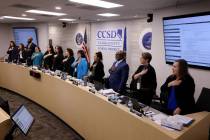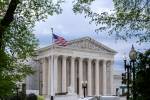EDITORIAL: Hot-button issues to dominate as high court opens term
Most of Washington is fixated on Congress and the White House, as President Joe Biden, Speaker Nancy Pelosi and Senate Majority Leader Chuck Schumer struggle to navigate the narrow straits between Democratic liberals and extremists in order to pass the largest expansion of government in the nation’s history.
But the third branch of government will soon also be in the spotlight.
The U.S. Supreme Court opens its new term on Monday with a host of cases with potentially far-reaching effects. The justices will return to live oral arguments after going viral during the previous term because of the pandemic.
Progressives have launched an all-out attack on the high court in recent months because they recoil at the fact that Donald Trump successfully named three justices to the panel during his four years in the Oval Office. They have openly revived FDR’s embarrassing and failed effort to expand the Supreme Court with sympathetic leftist justices to ensure preferred outcomes. Even liberals on the current court have spoken out against these nefarious court-packing schemes.
Such external pressure must not dissuade the justices from standing up for constitutional principles, whether such principles check misguided Republican impulses or Democratic ones. A justice’s first duty is to the law of the land and the Constitution, not to partisan advocacy groups seeking to erode the independence of the judiciary through threats and intimidation.
That said, this term could prove more contentious than most, as the justices will hear disputes involving a number of controversial issues, including:
■ Abortion rights. The justices will hear a case from Mississippi challenging a 2018 state law that prohibits abortion after 15 weeks, with a few exceptions. This will be the first time in nearly three decades that the justices will confront this hot-button issue directly, and it’s possible that they will agree to hear other abortion-related cases this term as well.
■ Gun rights. A challenge to New York’s restrictive concealed-carry permit rules represents the most significant Second Amendment case since the Heller ruling in 2008. The two men who brought the case argue that the Empire State’s rules give too much discretion to arbitrarily turn down permit requests.
■ The administrative state. In a case from California involving hospital reimbursement rates, the justices will determine how much leeway federal bureaucrats have to interpret the law even after a court has ruled that the law’s meaning is clear.
Other cases on the docket touch on immigration, religious freedom and free speech. The opportunities for the justices to fortify the Bill of Rights and the Constitution will be numerous. Let’s hope they seize them.




























